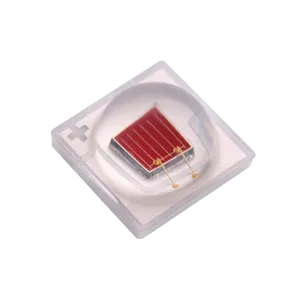The claims that LEDs are more energy efficient and that LEDs last longer are becoming more and more common, and rightfully so. But this breakthrough light source represents another huge advantage, one that is less well known: the LED color spectrum.
The "white" visible light naturally emitted by the sun and artificial light sources is actually composed of a range of colors. When light is refracted through a dispersive prism, these different colors can be seen. The different colors of light represent different wavelength frequencies - a typical human eye can perceive wavelengths from about 390 to 700 nm.
While sunlight consists of the richest combination of colors (in which you will see all the colors of the rainbow), many other forms of artificial "white" light lack a broad spectrum of color. MOONLEDS shows you.
Anatomy of an LED
The two basic types of LEDs are indicator-type LEDs and illuminator-type LEDs. Indicator LEDs are usually inexpensive, low-power LEDs, suitable only for indicator lights in panel displays and electronic devices, or for instrumentation lighting in automobiles and computers. Illuminator LEDs are resistant, high power devices that can provide illumination. All luminaire type LEDs have the same basic structure. They consist of a semiconductor chip (or core), a substrate to support the core, a power supply contact, a bonding wire to connect the contact to the core, a heat sink, a lens, and a housing.
LED Colors
LEDs produce different colors by using various materials that produce different wavelengths of photons. These individual wavelengths show up as different colors of light. the materials used in LEDs can handle the necessary levels of power, heat and humidity.
High brightness red and amber LEDs use aluminum indium gallium phosphorus (AlInGaP) material systems. Blue, green and cyan LEDs use the Indium Gallium Nitride (InGaN) system, and AlInGaP and InGaN together cover almost the entire spectrum, with a gap between green and yellow. Thus, the Color LED was born.
One way to achieve a larger spectrum is to mix different colors of LEDs in the same device. the base colors of RGB LED (red, green, blue) are used to build other colors within the diode itself. Combining red, green and blue in equal amounts produces white light.

Combining red, green and blue LEDs in a single LED device, such as a lighting fixture or a multi-chip LED, and controlling their relative intensities can produce millions of colors. Not only can you change the color of the light to red, green or blue, but you can also get purple, blue-green, orange and more. Unlike white LED lights that use Kelvin scales for color temperature, RGB lights only use their given color names.
RGB-based LED technology has the advantage of increasing the vibrancy of the LED color spectrum. By using remote color changing RGB, the LED color spectrum can be adjusted to change at different times of the day or in various situations at home or work.
Use of Color
The color spectrum of LED lights signals to our body's internal circadian rhythms, which are key players in cognition and mood, that we are in daytime situations. In addition to helping combat depressive symptoms, this makes us feel more alert. In contrast, incandescent light in the red spectrum actually decreases alertness and increases fatigue.
Interestingly, the LED color spectrum has also been shown to be beneficial for poultry LED lighting. Chickens raised under LED lighting were found to respond positively to the LED spectrum, which increased growth rates while reducing food costs and increasing the number of eggs per chicken. In addition, LED color spectroscopy has yielded great results for indoor gardeners and horticulturists.

RGB LEDs are used in a wide range of applications, from small portable devices to industrial lighting systems, from fun lights in consumer electronics to art installations in public spaces.

5050 RGB 3-IN-1 SMD LED
If you are looking for more information about color LEDs, feel free to contact the manufacturer MOONLEDS.

















